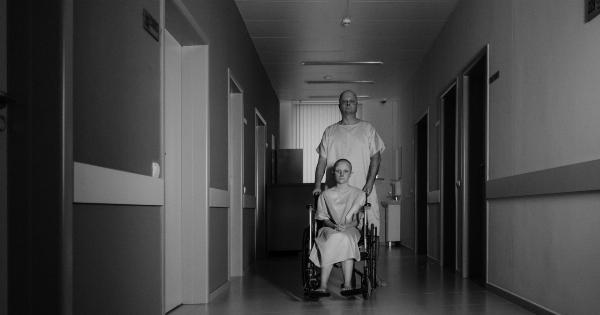Advancements in cancer treatment have significantly improved the survival rates of patients. However, some cancer treatments such as chemotherapy and radiation therapy can have detrimental effects on fertility, particularly in women.
Many women of childbearing age who survive cancer face the possibility of infertility due to damage to their ovaries. To address this concern, scientists and researchers are working on creating artificial ovaries for cancer survivors to regain fertility.
These artificial ovaries have the potential to revolutionize fertility preservation, giving hope to many cancer survivors who wish to start a family after their cancer battle.
The Importance of Fertility Preservation
For cancer survivors, preserving fertility can be a crucial aspect of their quality of life and long-term wellbeing. The ability to conceive a child naturally is an essential part of many individuals’ life goals.
Therefore, the potential loss of fertility due to cancer treatment can have profound emotional and psychological impacts. Preserving fertility not only provides cancer survivors with the opportunity to become parents but also offers them a sense of normalcy and control over their lives after the traumatic experience of cancer.
Challenges of Current Fertility Preservation Methods
Current fertility preservation methods for women, such as egg freezing and ovarian tissue cryopreservation, have limitations. These methods require invasive procedures, high costs, and may not always yield successful outcomes.
Furthermore, certain cancer types or treatments may make these preservation methods unfeasible or unadvisable. Thus, there is a need for more effective and accessible solutions to address the fertility needs of cancer survivors.
Artificial Ovaries: A Potential Solution
Artificial ovaries, also known as bioengineered ovaries, are emerging as a promising solution for fertility restoration in cancer survivors.
These implants aim to mimic the structure and function of natural ovaries and have the potential to offer long-term fertility options. Artificial ovaries can be designed to house immature eggs or follicles that can mature and produce hormones, enabling natural ovarian function.
The Development Process of Artificial Ovaries
Creating artificial ovaries involves sophisticated bioengineering techniques and requires a deep understanding of ovarian biology.
Scientists are exploring various approaches, including 3D bioprinting, tissue engineering, and stem cell research, to develop functional and viable artificial ovaries. The goal is to create a bio-compatible scaffold that can support the growth and maturation of ovarian follicles, allowing for the production of mature eggs and hormone secretion.
Stem Cells and Artificial Ovaries
One promising avenue of research for artificial ovaries involves the use of stem cells. Stem cells are undifferentiated cells that have the ability to differentiate into various types of cells, including ovarian cells.
By harnessing the potential of stem cells, scientists are working towards creating artificial ovaries that can support follicle development and the production of viable eggs. This technology offers hope for cancer survivors who have lost their ovarian function due to cancer treatments.
Animal Studies and Successful Implantation
To test the viability and functionality of artificial ovaries, researchers are conducting animal studies.
These studies involve implanting bioengineered ovaries into animals, such as mice or non-human primates, and assessing their reproductive capabilities. Encouraging results from these studies indicate that artificial ovaries have the potential to restore fertility in animals. These findings are crucial for advancing the field and providing insights into the feasibility of artificial ovaries in humans.
Human Trials and Clinical Application
While artificial ovaries are still in the experimental stages, human trials are on the horizon.
Clinical trials involving cancer survivors and women experiencing premature ovarian insufficiency will help determine the safety, efficacy, and long-term outcomes of artificial ovaries in humans. These trials will pave the way for the eventual clinical application of artificial ovaries, providing a much-needed fertility restoration option for cancer survivors worldwide.
Ethical Considerations
The development and utilization of artificial ovaries also raise ethical considerations. It is essential to ensure that the research and implementation of artificial ovaries prioritize patient well-being, informed consent, and equitable access.
Additionally, questions regarding the long-term effects of artificial ovaries and their impact on the offspring’s health and development need to be addressed in order to establish safe and responsible practices within this field.
Potential Impact and Future Directions
The creation of artificial ovaries has the potential to significantly impact the lives of cancer survivors. If successful, this technology could provide an accessible and effective fertility preservation solution for women affected by cancer.
Moreover, artificial ovaries could be instrumental in addressing other reproductive challenges, such as age-related infertility or genetic disorders. Continued research and technological advancements in this field offer hope for a future where fertility preservation is within reach for all those in need.
The Power of Artificial Ovaries: Empowering Cancer Survivors
The development of artificial ovaries represents a groundbreaking advancement in the field of fertility preservation.
It offers a ray of hope to cancer survivors who dream of starting or expanding their families after overcoming the challenges of cancer treatment.
By providing a pathway to restore fertility and reproductive autonomy, artificial ovaries have the potential to positively transform the lives of countless individuals, empowering them to embrace a future filled with hope, joy, and the possibility of parenthood.



























